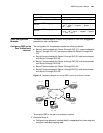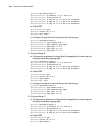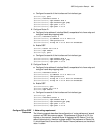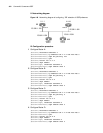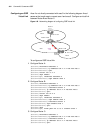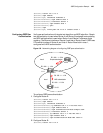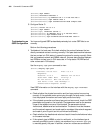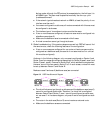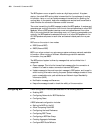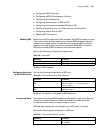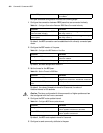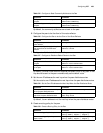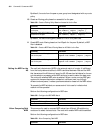
OSPF Configuration Example 447
dial-up mode, although the PPP protocol is encapsulated on the link layer, it is
still NBMA type. The peer must be specified manually. Use the
ospf peer
ip-address command.
■ If the network type is broadcast network or NBMA, at least the priority of one
interface must be over 0.
■ If an area is configured to a stub area, all routers connected with this area must
be configured to stub areas.
■ The interface type of two adjacent routers must be the same.
■ If two or more areas are configured, at least one area must be configured into
a backbone area (area 0).
■ Make sure the backbone area is connected with all areas.
■ A virtual connection cannot go through stub area.
2 Global troubleshooting: If the previous steps are correct but OSPF still cannot find
the remote route, check the following features of the configuration.
■ If two or more areas are configured for one router, at least one area must be
configured as a backbone area (the area-id of one area must be 0 or a virtual
link must be configured).
As shown in the following diagram, only one area is configured on Router A and
Router D and two areas are configured respectively for Router B (area0, area1) and
Router C (area1, area2). One area in Router B is 0, which satisfies the requirement.
However, none of the two areas in Router C is 0. In such a case, a virtual link must
be set up between Router C and Router B.
Make sure area 2 and area 0 (backbone area) are connected.
Figure 151 OSPF Area Schematic Diagram
■ The virtual link cannot go through a stub area and the backbone area (area 0)
cannot be configured as stub area. Therefore, if a virtual link is configured
between Router B and Router C, area 1 cannot be configured as a stub area,
nor can area 0. In the above diagram, only area 2 can be configured as a stub
area.
■ The router in the stub area (Router D) cannot receive an external route.
■ Make sure the backbone areas are connected.
Rout er A
Rou t er B
Rout er C
Rout er D
ar ea 0
ar ea 1
ar ea 2



